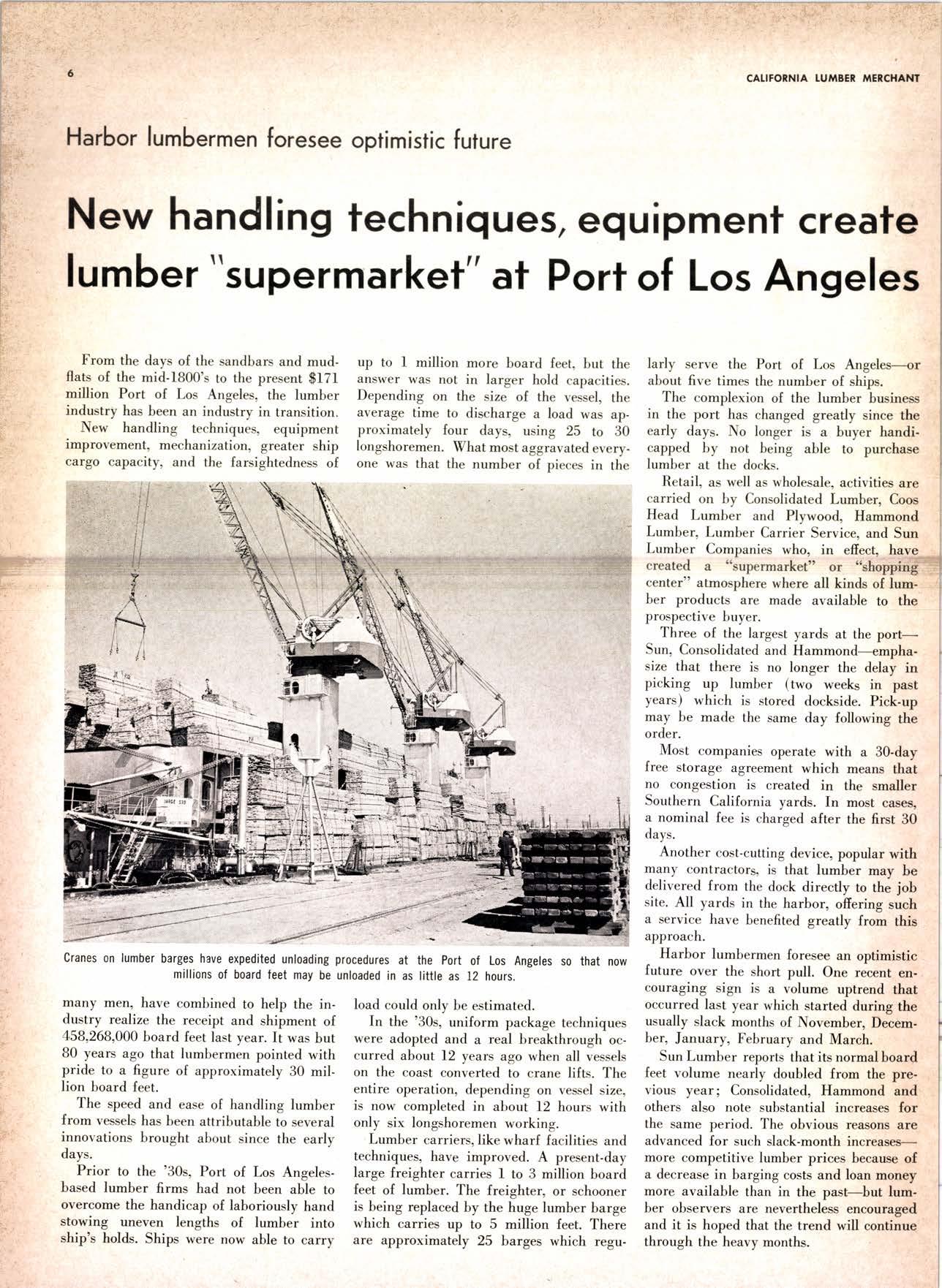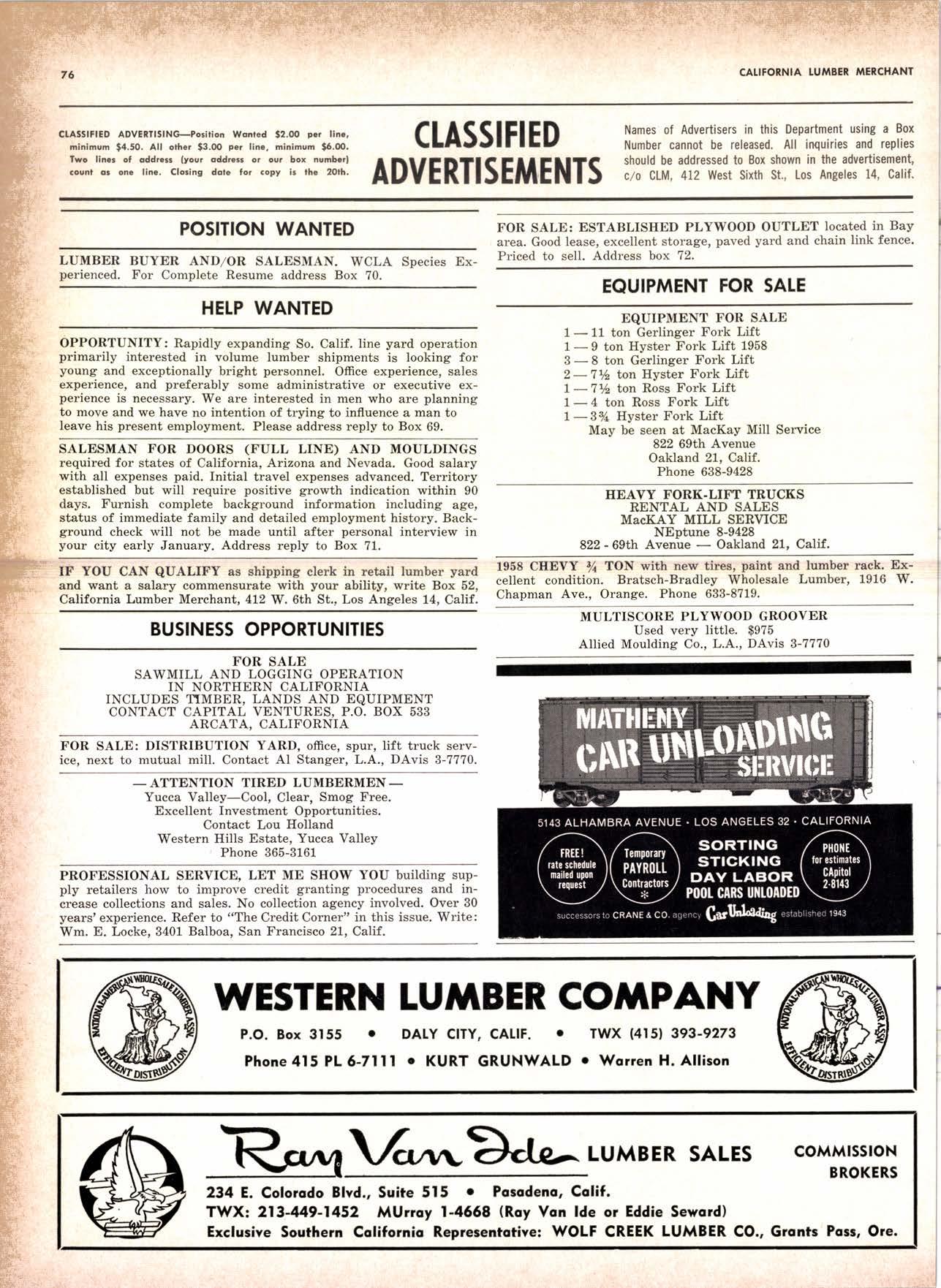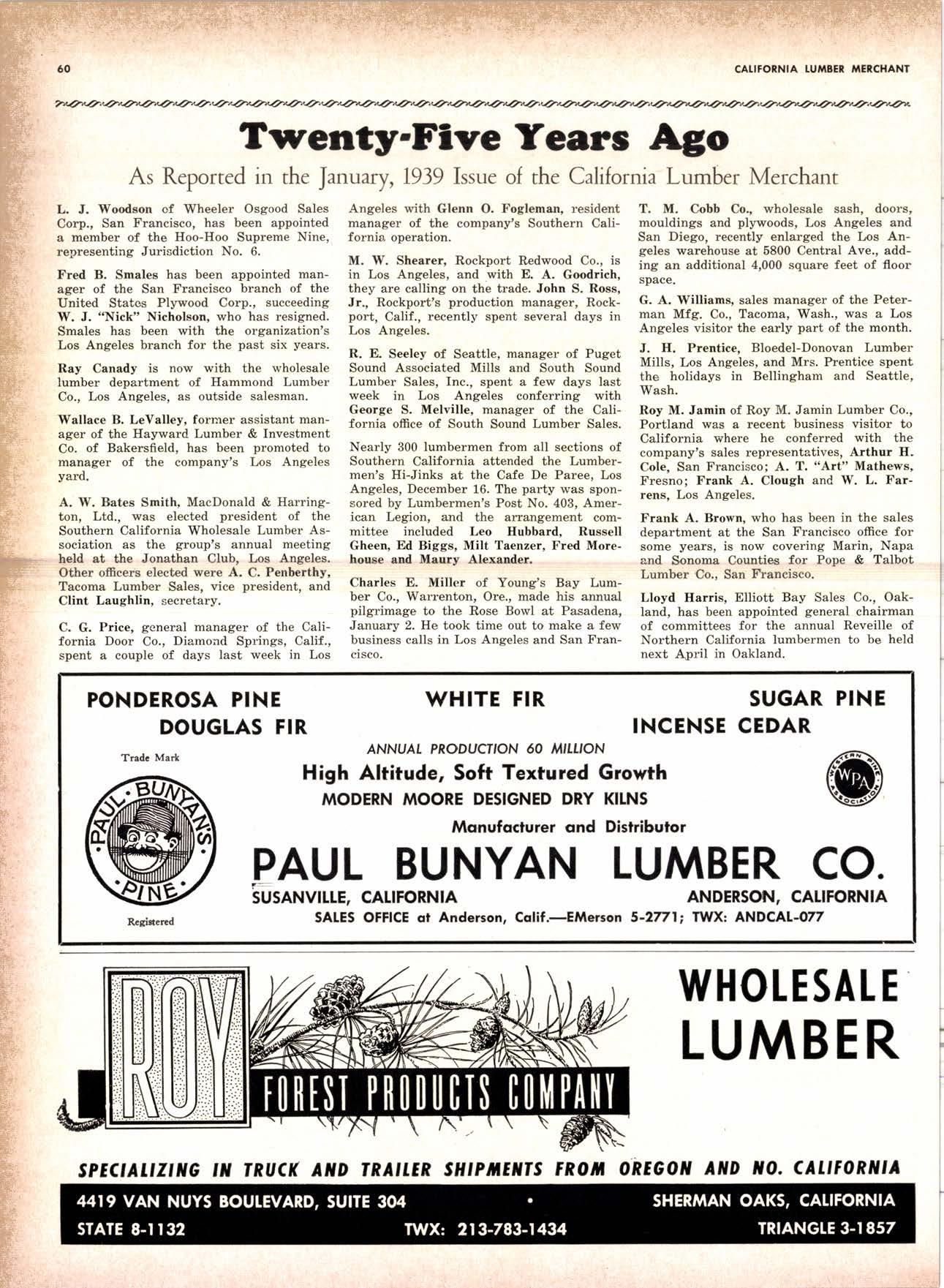
2 minute read
New handling techniqu€s, equipment create lumber "supermarket" af Porf of Los Angeles
From the days of the sandbars and mudflats of the mid-1800's to the present $171 million Port of Los Angeles, the lumber industry has been an industry in transition.
New handling techniques, equipment improvement, mechanization, greater ship cargo capacity, and the farsightedness up to I million more board feet, but the answer was not in larger hold capacities. Depending on the size of the vessel, the average time to discharge a load was approximately four days, using 25 to 30 longshoremen. What most aggravated everyone was that the number of pieces in the larly serve the Port of Los Angeles-or about five times the number of ships.
The complexion of the lumber business in the port has changed greatly since the early days. No longer is a buyer handicapped by not being able to purchase lumber at the docks.
Retail, as well as wholesale, activities are carried on by Consolidated Lumber, Coos Head Lumber and Plywood, Hammond Lumber, Lumber Carrier Service, and Sun many men, have combined to help the industry realize the receipt and shipment of 458,268,000 board feet last year. It was but B0 years ago that lumbermen pointed with pride to a figure of approximately 30 million board feet.
Lumber Companies who, in efiect, created a "supermarket" or trhq center" atmosphere where all kinds of lumber products are made available to the prospective buyer.
Three of the largest yards at the portSun, Consolidated and Hammond-empha. size that there is no longer the delay in picking up lumber (two weeks in past years) which is stored dockside. Pick-up may be made the same day following the order.
Most companies operate with a 30-day free storage agreement which means that no congestion is created in the smaller Southern California yards. In most cases, a nominal fee is charged after the first 3O days.
Another cost-cutting device, popular with many contractors, is that lumber may be delivered from the dock directly to the job site. All yards in the harbor, ofiering such a service have benefited greatly from this approach.
The speed and ease of handling lumber from vessels has been attributable to several innovations brought about since the early days.
Prior to the '30s, Port of Los Angelesbased lumber firms had not been able to overcome the handicap of laboriously hand stowing uneven lengths of lumber into ship's holds. Ships were now able to carry load could only be estimated.
In the '30s, uniform package techniques were adopted and a real breakthrough occurred about 12 years ago when all vessels on the coast converted to crane lifts. The entire operation, depending on vessel size, is now completed in about 12 hours with only six longshoremen working.
Lumber carriers, like wharf facilities and techniques, have improved. A present-day large freighter carries I to 3 million board feet of lumber. The freighter, or schooner is being replaced by the huge lumber barge which carries up to 5 million feet. There are approximately 25 barges which regu.
Harbor lumbermen foresee an optimistic future over the short pull. One recent encouraging sign is a volume uptrend that occurred last year which started during the usually slack months of November, Decdm. ber, January, February and March.
Sun Lumber reports that its normal boar{ feet volume nearly doubled from the previous year; Consolidated, Hammond and others also note substantial increases for the same period. The obvious reasons are advanced for such slack-month increasesmore competitive lumber prices because of a decrease in barging costs and loan money more available than in the past-but lumber observers are nevertheless encourag,ed and it is hoped that the trend will continue through the heavy months.











